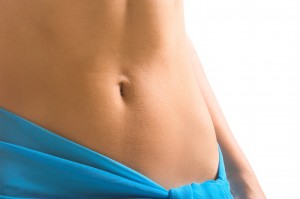 No Drain Tummy Tuck vs Traditional Tummy Tucks: A matter of preference
No Drain Tummy Tuck vs Traditional Tummy Tucks: A matter of preference
For those who have just recovered from pregnancy or extreme weight loss, abdominoplasty or tummy tuck is the cosmetic procedure that’s commonly performed for that midsection. For dealing with saggy stomachs, it’s the most effective and well sought out procedure.
Tummy tucks are done by removing a certain amount of skin from the lower abdomen and tightening the muscles. A bit of liposuction is used to contour the waist area after the excess fat and skin are removed.
Post-surgical wound drainage to avoid infection and the possibility of complications due to the build up of fluids, is one of the biggest drawbacks of the traditional tummy tuck procedure.
Post-surgical wound drainage is done by suturing the drains on the patient; it doesn’t take much to imagine the discomfort and mobility limit that it would impose.
After surgery issues can range from patients being irate because they can’t move properly, skin irritation, to even their drains being dislodged from their wounds. The tubes cannot be removed until the wound has healed internally, requiring the patient to stay bedridden for weeks. Despite the wound closing and the tubes being removed, there are still instances wherein the seroma or fluid build up occurs. But the new “no drain tummy tuck” has proven to be new new solutions to these problems.
No drain tummy tuck, a new technique that revolutionizes cosmetic surgeries was introduced by Dr. Vath. “Quilting” is a new technique in cosmetic surgery that claims to eliminate the need for post-surgical draining of the wound. “Dead spaces” are what most cosmetic surgeons refer to as the area where the fluids gather, between the muscle and the skin that has not healed.
Avoiding the fluids from accumulating from the dead area between the skin and the muscle by the use of tension sutures differentiates the “no drain tummy tuck” from the normal cosmetic tummy tuck method, eliminating the drains from the equation. There is minimal space that the tension sutures leave for fluid build up-in this way, the need to drain the wound during post operation is eliminated. Despite the fact that there is still a chance that seroma or fluid build up will occur, it would only take a little effort in and time in draining it. Hypertrophic scars, wound tension and general discomfort usually brought about by conventional tummy tucks are minimized with the no drain tummy tuck procedure.
Since “no drain abdmominoplasty” is not yet deemed as a conventional method, those who wish to avail of the procedure must find a licensed cosmetic surgeon who practices the procedure-and they’re few and far in between. For some people, the increase of the time it takes to complete the procedure is a big deal-five to ten minutes more than the conventional abdominoplasty. And of course, quilting does not apply to all tummy tucks-some procedures are just too big.
The innovative techniques that enable a no drain tummy tuck is well worth it: the tension sutures ensure that the skin is well stretched and distributed over the muscles evenly, dramatically decreasing the space where seroma, or fluid accumulation, can occur. It’s better to undergo a longer surgical time with no drain tummy tuck than to endure weeks of bedridden post-surgery draining.
